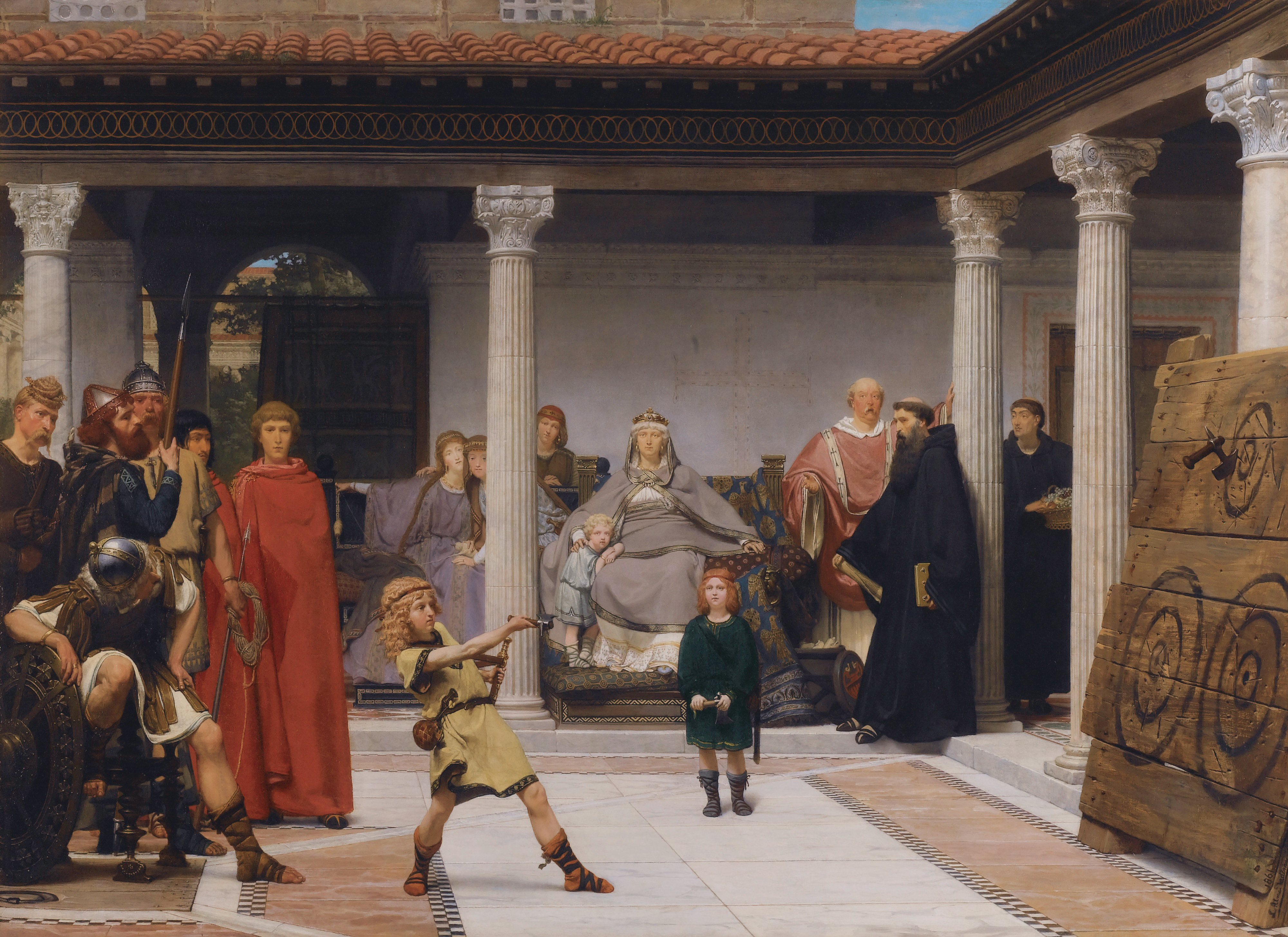|
Spring (Alma-Tadema Painting)
''Spring'' is an 1894 oil-on-canvas painting by the Anglo-Dutch artist Lawrence Alma-Tadema, which has been in the collection of the J. Paul Getty Museum in Los Angeles, California, since 1972. The painting relates the Victorian custom of children collecting flowers on May Day back to an Ancient Roman spring festival, perhaps Cerealia or Floralia or Ambarvalia, although the details depicted in the painting do not correspond to any single Roman festival. It was the inspiration for the scene of Julius Caesar's triumphal entry into Rome in the 1934 film ''Cleopatra (1934 film), Cleopatra''. Description The tall, narrow painting depicts a procession of women and children along a Roman street and down some marble steps. Spectators cheer from the classical buildings of polychrome marble to either side, some throwing down flowers. The participants in the procession are garlanded with bright flowers, with some also bearing baskets of flowers or branches of blossom, and other playi ... [...More Info...] [...Related Items...] OR: [Wikipedia] [Google] [Baidu] |
Lawrence Alma-Tadema
Sir Lawrence Alma-Tadema ( ; born Lourens Alma Tadema, ; 8 January 1836 – 25 June 1912) was a Dutch people, Dutch painter who later settled in the United Kingdom, becoming the last officially recognised Denization, denizen in 1873. Born in Dronryp, the Netherlands, and trained at the Royal Academy of Fine Arts (Antwerp), Royal Academy of Antwerp, Belgium, he settled in London, England in 1870 and spent the rest of his life there. A painter of mostly classical subjects, he became famous for his depictions of the luxury and decadence of the Roman Empire, with languorous figures set in fabulous marbled interiors or against a backdrop of dazzling blue Mediterranean Sea, Mediterranean sea and sky. One of the most popular Victorian painters, Alma-Tadema was admired during his lifetime for his draftsmanship and accurate depictions of Classical antiquity, but his work fell out of fashion after his death, and only since the 1960s has it been appreciated for its importance within Vic ... [...More Info...] [...Related Items...] OR: [Wikipedia] [Google] [Baidu] |
Capriccio (art)
In painting, a capriccio (, plural: ''capricci'' ; in older English works often anglicized as "caprice") is an Architecture, architectural fantasy, placing together buildings, Archaeology, archaeological ruins and other architectural elements in fictional and often fantastical combinations. These paintings may also include staffage (figures). Capriccio falls under the more general term of landscape painting. This style of painting was introduced in the Renaissance art, Renaissance and continued into the Baroque art, Baroque. By the late 18th century the term had expanded to mean any image with an equivalent degree of fantasy, for example as used in the titles of print series by Giovanni Battista Tiepolo and Francisco Goya, Goya, both of whom focus on figures rather than architecture. The term is also used for other types of art with an element of fantasy (as Capriccio (music), capriccio in music). Capriccio style There are several etymologies that have been put forward for ' ... [...More Info...] [...Related Items...] OR: [Wikipedia] [Google] [Baidu] |

